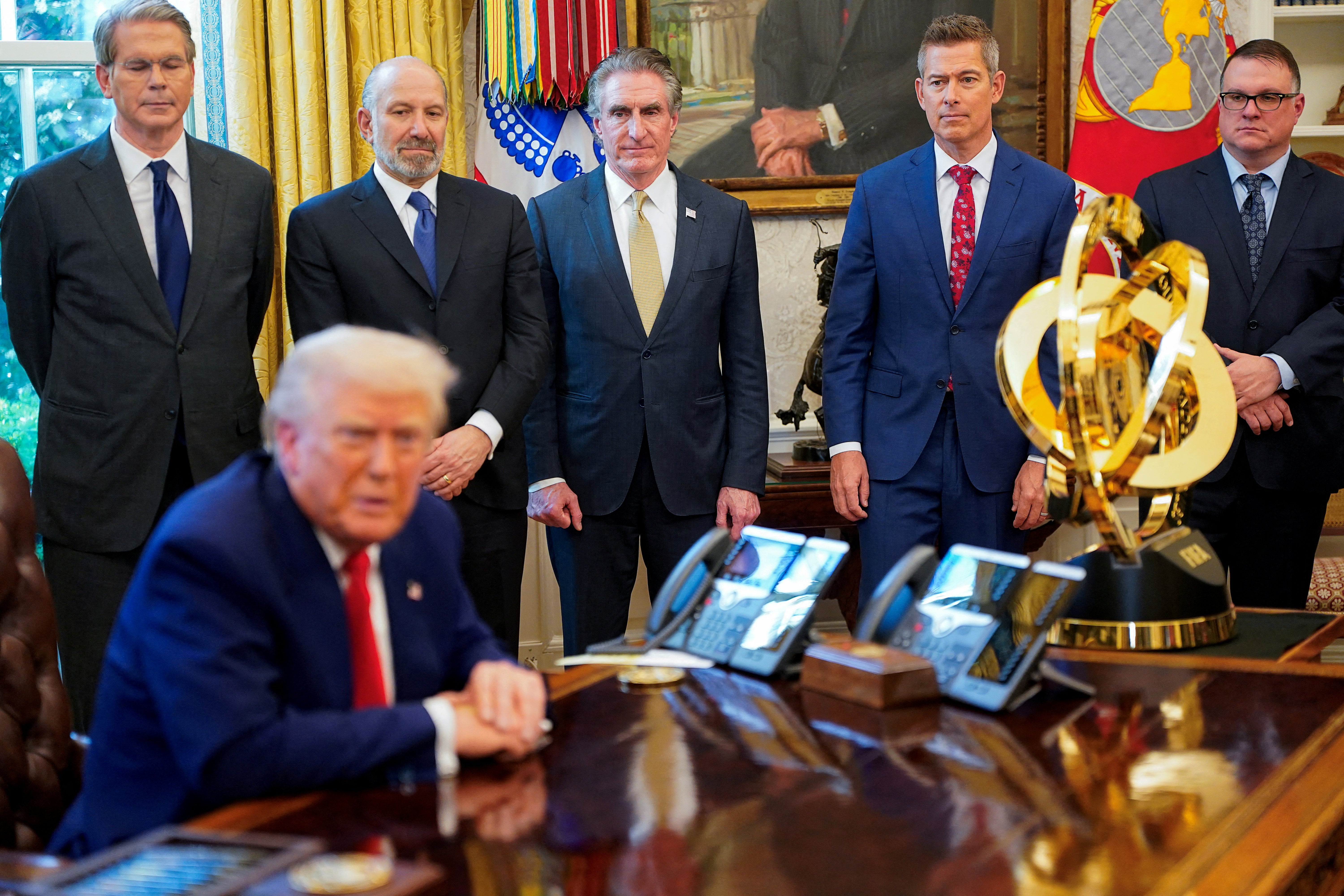Treasury Secretary Scott Bessent just gave Americans a reason to doubt whether they’ll ever see the “rebates” that some MAGAworld figures have called for as funds roll in from Trump’s tariff plans.
Bessent was on CNBC’s “Squawk Box” explaining that the projected total of $300 billion in tariff revenue (the administration’s own figure) would be first applied to driving down America’s national debt.
“We’re going to bring down the deficit-to-GDP [ratio]. We’ll start paying down the debt, and then at that point that can be used as an offset to the American people,” Bessent told CNBC Tuesday.
He added that “I think, at a point, we’re going to be able to do it,” but stressed that for now, “President [Donald] Trump and I are laser-focused on paying down the debt.”
His comments come as new reports show that the U.S. has taken in $100 billion in tariff revenue since April, the onset of Trump’s “Liberation Day” tariffs. That figure is expected to rise at an accelerated rate for the remainder of the year after enforcement of Trump’s “reciprocal” tariffs began in early August.

Bessent’s comments betray one uncomfortable fact for both the Trump administration and House Republicans, however. The deficit-to-GDP ratio remains higher than 6 percent after 2024 and is likely to rise in the coming months, not fall. Real GDP growth is expected to be negatively affected by the president’s tariff agenda, while the Republican budget reconciliation package that extended the 2017 tax cuts and poured billions into ICE enforcement measures was not deficit-neutral and is projected to add $3.4 trillion to the federal budget deficit over the next decade.
All of that is to say: the president may end up having to choose between offsetting his own policy platform’s effects on the national debt or a politically expedient move to cut Americans a check. The president pursued that latter option once before, during the Covid-19 pandemic, with the help of Democrats in Congress; it didn’t help his re-election prospects that year.
Bessent and others in the Trump administration are hoping that tariff revenues will continue to rise, and the Trump team has generally dismissed fears from economists around the effects tariffs will have on economic growth.
Those fears are a central part of the dispute between the president and his Federal Reserve chief, Jerome Powell.
For months, Trump has heaped political pressure and scorn on Powell over the Fed chair’s refusal to lower interest rates — something the president sees as the main impediment to GDP growth. Powell, meanwhile, has cited concerns about persistent inflation in his repeated decisions to hold rates steady.

The feud stems from a larger dynamic playing out within the Trump administration: the president’s persistent fury in response to federal officials, almost exclusively career officials with nonpartisan backgrounds, refusing to play along with the White House’s rose-colored view of the U.S. economy under Trump, including the effects of inflation, unemployment and wage growth.
Powell has taken abuse from the president for months, and earlier in August Trump went a step further and fired the head of the Bureau of Labor Statistics after a jobs report that generated unsatisfactory headlines. Trump accused the agency of juicing the numbers to help Democrats in the 2024 election.
This week Trump escalated his feud with the Fed and called for the first Black member of the Fed’s board of governors to resign. The president accused the woman, Lisa Cook, of mortgage fraud and demanded that the Justice Department investigate her after one of his political appointees at another agency made accusations that she “falsified bank records.”
Cook replied that the accusations were “based on a mortgage application from four years ago, before I joined the Federal Reserve” and that she had “no intention of being bullied to step down from my position because of some questions raised in a tweet.”
“I do intend to take any questions about my financial history seriously as a member of the Federal Reserve and so I am gathering the accurate information to answer any legitimate questions and provide the facts,” she added.


